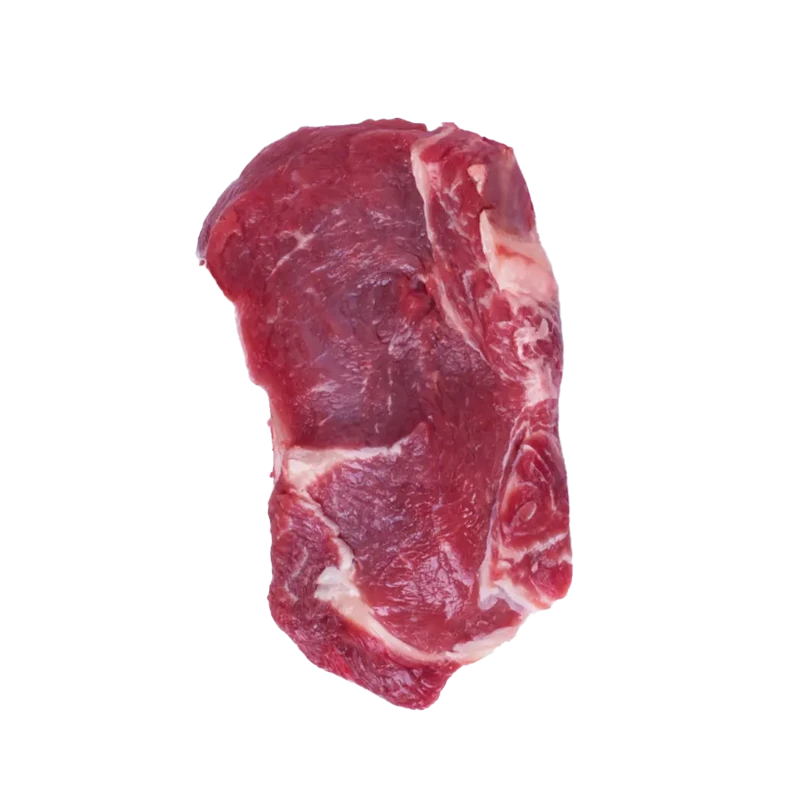Beef — Nutrients, Health Benefits, And Shopping Tips

Written by Listonic Team
Last update on September 4, 2024
Nutrients
Nutrition facts
Amount per 100 g
Calories
🔥 250 kcal
| Nutrition per: 100 g | Value | % Daily Value* |
|---|---|---|
| Carbs | 0 g | - |
| Fiber | 0 g | - |
| Sugars | 0 g | - |
| Glycemic Index | 0 | - |
| Protein | 26 g | 52% |
| Sodium | 50 mg | 2.17% |
| Total Fat | 15 g | 19.23% |
*The % of Daily Value (DV) tells you how much a nutrient in a serving of food contributes to a daily diet. 2,000 calories a day is used for general nutrition advice.
Beef is a nutritious part of meals when eaten in moderation and prepared with low-fat cooking methods.
Encyclopedia of Foods. A Guide to Healthy Nutrition
26 g
💪 High Protein Content
Key takeaways
Health benefits
- Rich in protein, which is essential for muscle growth, repair, and overall body function.
- High in essential vitamins and minerals such as iron, zinc, and B vitamins (especially B12), which support energy production, immune function, and overall health.
- Contains healthy fats, which provide energy and support cell function.
- Supports cognitive function due to its high Vitamin B12 content, which is crucial for brain health.
Health risks
- High saturated fat content particularly in certain cuts, which can raise cholesterol levels and increase the risk of heart disease.
- High cholesterol levels in beef, which can contribute to heart disease and other cardiovascular issues if consumed excessively.
- Risk of contamination with harmful bacteria such as E. coli or Salmonella, especially if the beef is undercooked.
- Potential carcinogens from cooking methods like grilling or frying at high temperatures, which can produce harmful compounds such as heterocyclic amines (HCAs).
How to choose beef
Bright red beef with fat marbling throughout is ideal, as this enhances flavor and tenderness when cooked. Ensure the meat is firm and sourced from reputable suppliers practicing ethical husbandry.
Bypass beef that appears overly dark or emits an off odor, which suggests it is past its prime. Additionally, beef that feels sticky or slimy should be avoided due to potential bacterial growth.

How to store beef
Fresh beef should be stored in the refrigerator and used within a few days. For longer storage, freezing is effective, where it can last several months. Keeping beef in its original packaging or an airtight container helps preserve its freshness.
Exposure to air and heat can cause beef to spoil quickly, so these should be avoided. Do not refreeze beef once thawed, as this can affect its texture and safety. Thawing beef in the refrigerator is the safest method to prevent bacterial growth.
✅ Extra Tip
How long does it last?
Beef, when stored properly, can last for 3-5 days in the refrigerator. For longer storage, it can be frozen and kept for up to 6-12 months. Ensure it is wrapped tightly to prevent freezer burn.
What to do with leftovers?
Leftover beef can be used in a variety of dishes. Slice it thinly and add to sandwiches or wraps with your favorite toppings. It’s also great chopped up and mixed into stir-fries or added to soups and stews for extra protein.
Use leftover beef in a pasta dish, such as beef stroganoff, or mix it into a hearty beef and vegetable casserole. If you have a lot of beef, consider making a batch of beef chili or using it in a beef stir-fry with rice and vegetables. Beef can also be sliced and added to a salad for a filling meal or used as a topping for pizzas and flatbreads. For a quick and easy meal, reheat the beef and serve it with a side of mashed potatoes or vegetables.
👨⚕️️ Medical disclaimer
Discover products from other categories
Listonic Team
Fact-checked
Our editorial team checked this article to make sure it was accurate at the time of publishing it.
Get the top-rated shopping list app on your phone!







